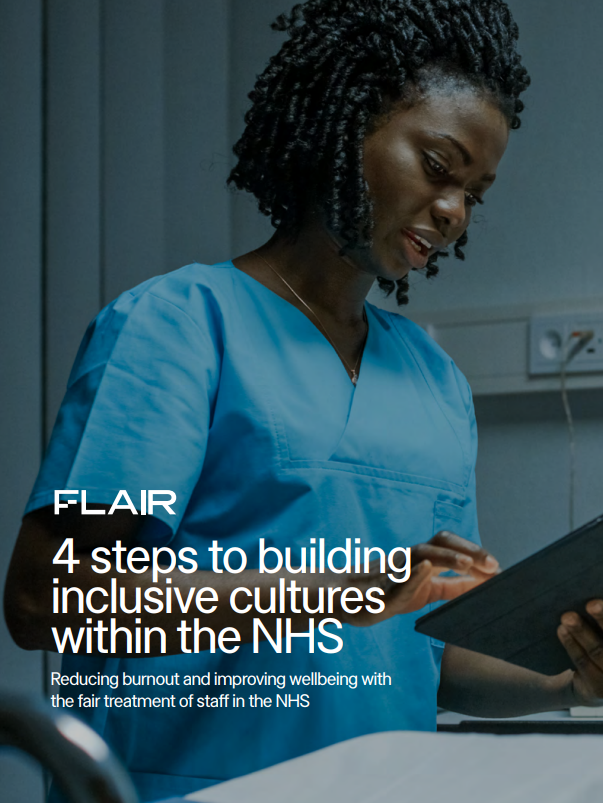Resources and Research
4 steps to building inclusive cultures within the NHS
Downloading Resource
To download this resource, please enter your details below and press the continue button.
Details
This guide is written based on the findings from the seventh Workforce Race Equality Standard (WRES) data report released in March 2022. The 2021 WRES report, which showcases the staff experience across the NHS, clearly highlighted that whilst there have been positive changes in diverse representation in the NHS, there is still much more that needs to be done at a cultural level to tackle inequities and build inclusive workspaces where all ethnicities can thrive.
The last two years have been the most challenging in NHS history and it is fantastic that an increasing number of diverse people have been inspired to join the NHS workforce. However, to ensure the NHS is positioned to recover post-pandemic, it is imperative that inclusion and diversity are placed at the heart of the organisation to overcome the challenges in recruitment, retention, and planning, in order to directly improve clinical outcomes and the experience of care for patients.
“The data in this year’s report is a reflection of the systematised and complex picture that applies to racial discrimination in the country [...] As we plan the recovery of services following the pandemic, addressing these issues of equality and inclusion are core to their success.” - Em Wilkinson-Brice, Acting NHS Chief People Office at NHS Anton Emmanuel, Head of the WRSE.